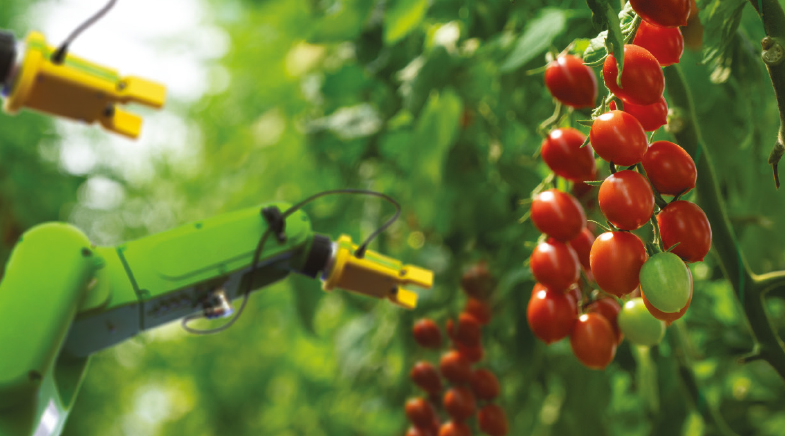If birds could talk...
-
- from Shaastra :: vol 04 issue 10 :: Nov 2025

Bioacoustics researchers have some trilling news.
Once the Sun set, Manjari Jain would leave for the forests, armed with sundry equipment: different kinds of recorders, a microphone, and a camera. The jungle, alive with the sound of animal species, fascinated Jain. As a PhD student at the Indian Institute of Science in Bengaluru in the early 2000s, she spent hours studying the calls of nocturnal crickets and katydids.
Now a bioacoustics ecologist at the Indian Institute of Science Education and Research (IISER) Mohali, Jain has been studying the sounds of bird and insect species for two decades. Bioacoustics ecology is a sustainable, non-invasive technique for studying animal calls that helps researchers understand animal behaviour and evolution.
Jain and her group have been travelling through deep forests in the Western Ghats to understand signal evolution: how animal calls have evolved. She has been working mainly on social babblers, a group of birds found across India, to explore how social behaviour influences call complexity and interaction patterns. Her team's model species was the jungle babbler, but it has also worked on the large grey babbler and the common babbler. The team also collected data from jungles across India, from the north to the south.

After almost five years of study, they have concluded that jungle babblers don't just babble, they communicate (bit.ly/babbler-com). "It wasn't a single eureka moment," Jain says, "but rather the result of years of work that led to the realisation..." The team finally understood what the birds were saying, she says.
The team studied the less-explored area of vocal communication in birds. Their study presents evidence of complex acoustic communication in cooperatively breeding jungle babblers. The species was found to have a diverse vocal repertoire of 15 call types used in affiliative or agonistic situations. These calls help coordinate social behaviours such as group movement, foraging, brood care, aggression, and vigilance. Eight of the 15 calls were related to vigilance, indicating a strong investment in coordinated group alertness — a feature common among cooperatively breeding birds, that is, animal groups with helpers who assist in raising the young of other members.
Jungle babblers have a specific call known as the contact call, which is used when some individuals are left behind or when members of the group try to reconnect with those who have separated. The same call might also be used in different contexts. The birds also produce calls while looking out for predators, a behaviour similar to that of sentinels in other species. Among jungle babblers, a bird usually takes up a higher perch to look out for danger while the others forage. The one on guard duty continuously produces a soft call known as the watchman's song. The study found that these birds sound alert calls when there is danger, and other types of calls are used to coordinate group movement or communicate with young ones.
The findings show that jungle babblers have a structurally and functionally complex vocal system and provide a basis for studying the combinatorial and syntactic principles behind bird communication. They also found that the calls were made up of notes arranged in specific orders, showing elements of syntax. Their calls are like a primitive form of language: certain notes occur only after others, and some are reused across different calls, like letters forming multiple words. However, studying sound alone is not enough, she stresses. "To truly understand animal communication, one must study acoustics and behaviour together: only then does the biological relevance emerge," Jain says.
FINDING HOPE
The study of bird calls often leads to startling results. During their field trips in the Eastern Ghats in 2022, behaviour ecologist Robin Vijayan's group from IISER Tirupati thought they had heard a call that sounded like that of the Jerdon's courser, a nocturnal bird thought to be extinct. Discussions at an Indo-U.S. science and technology forum on a proposed study to trace the bird were followed by a bioacoustics workshop held at IISER Tirupati, bringing together ecologist P. Jeganathan, Russell Charif from the K. Lisa Yang Center for Conservation Bioacoustics at Cornell University, and Vijayan's group. Together, they developed a systematic plan to detect the endangered bird using automated sound recorders.
A bird usually takes up a higher perch to look out for danger, producing a softcall known as the watchman's song.
They tested four types of recording devices to collect acoustic data and used two sound analysis software programs, Raven Pro and Kaleidoscope Pro, to analyse the recordings. Based on earlier experiments on how sound travels in that area, they estimated that each recorder could detect calls within a 500-metre radius. The study area was divided into 1-sq-km grids, and a recorder was placed at the centre of each grid. The team deployed 17 recorders, carefully hidden.
Over five months in 2021, they recorded 24,349 hours of audio data. Using both software programs, they created a detection process that generated millions of possible call detections. These detections were then manually checked against known calls of bird species that live in the same area and whose calls are in the same frequency range as the Jerdon's courser's. The researchers used data from eBird —an online platform and citizen science project that records bird sightings — and their own field notes to shortlist these species. For unclear recordings, they sent a questionnaire with audio clips to 11 bird experts across India, asking them to rate whether the calls were from a Jerdon's courser. There was no confirmation, but the teams had recorded one unusual call that resembled that of the elusive bird. "The bird was last seen in 2008, so hearing a call like the Jerdon's courser's call in itself is great because mimics can incorporate calls from co-occurring species in their repertoire," says Chiti Arvind, a scholar in Vijayan's lab at IISER Tirupati. "Though this instance doesn't confirm or refute the presence of the bird currently, it gives us some hope," she adds. Vijayan's group combines acoustic and genetic data to investigate patterns, functions, and drivers of birdsongs (bit.ly/J-courser).

Another study (bit.ly/NVI-bird) by Vijayan's group focused on the white-bellied blue sholakili. The bird is known for its rich and varied songs and remarkable differences in vocalisations both among individuals and between populations. In this study, the team introduces a new method called the Note Variability Index (NVI), which measures song complexity by comparing notes within a song using spectral cross-correlation. It eliminates the need for manually classifying notes, which can be subjective and error-prone.
The team evaluated both synthetic and real bird songs and showed that NVI captures subtle variations in note structures better than older methods. It is fast, objective, and works well with existing sound analysis software, making it suitable for large datasets. The method enables researchers to better understand avian communication, evolution, and behaviour. The system is critical for determining whether related birds share more song parts by comparing the extent to which their notes overlap with those of unrelated birds in the same population.
CLEVER CRICKETS
In an ongoing study, Jain's team is exploring how crickets communicate in groups, without their sounds overlapping, based on calls recorded in the Western Ghats. Crickets use two key strategies. One is spatial separation, keeping distance so their calls don't clash. The other is temporal alternation, adjusting timing so one calls during the other's silent gaps. When one cricket's call overlaps with another's, it introduces a slight phase delay, adjusting the timing so that its calls occur in the silent intervals of the other. "It's like a rhythmic dance. I speak when you're silent, you speak when I'm silent, a beautiful solution," Jain explains. The study shows the animals learned how to unmask others' voices through an evolutionary process.
"Acoustics offered a major advantage because of its scalability. It allows biodiversity monitoring without requiring expensive instruments or highly trained specialists," Vijayan says.
With tools such as BirdNET — an AI system that identifies bird species from recorded sounds — citizen scientists can now record and classify bird calls, enabling data collection from across India. This, Vijayan says, is one of the biggest strengths of acoustic methods.
Have a
story idea?
Tell us.
Do you have a recent research paper or an idea for a science/technology-themed article that you'd like to tell us about?
GET IN TOUCH














